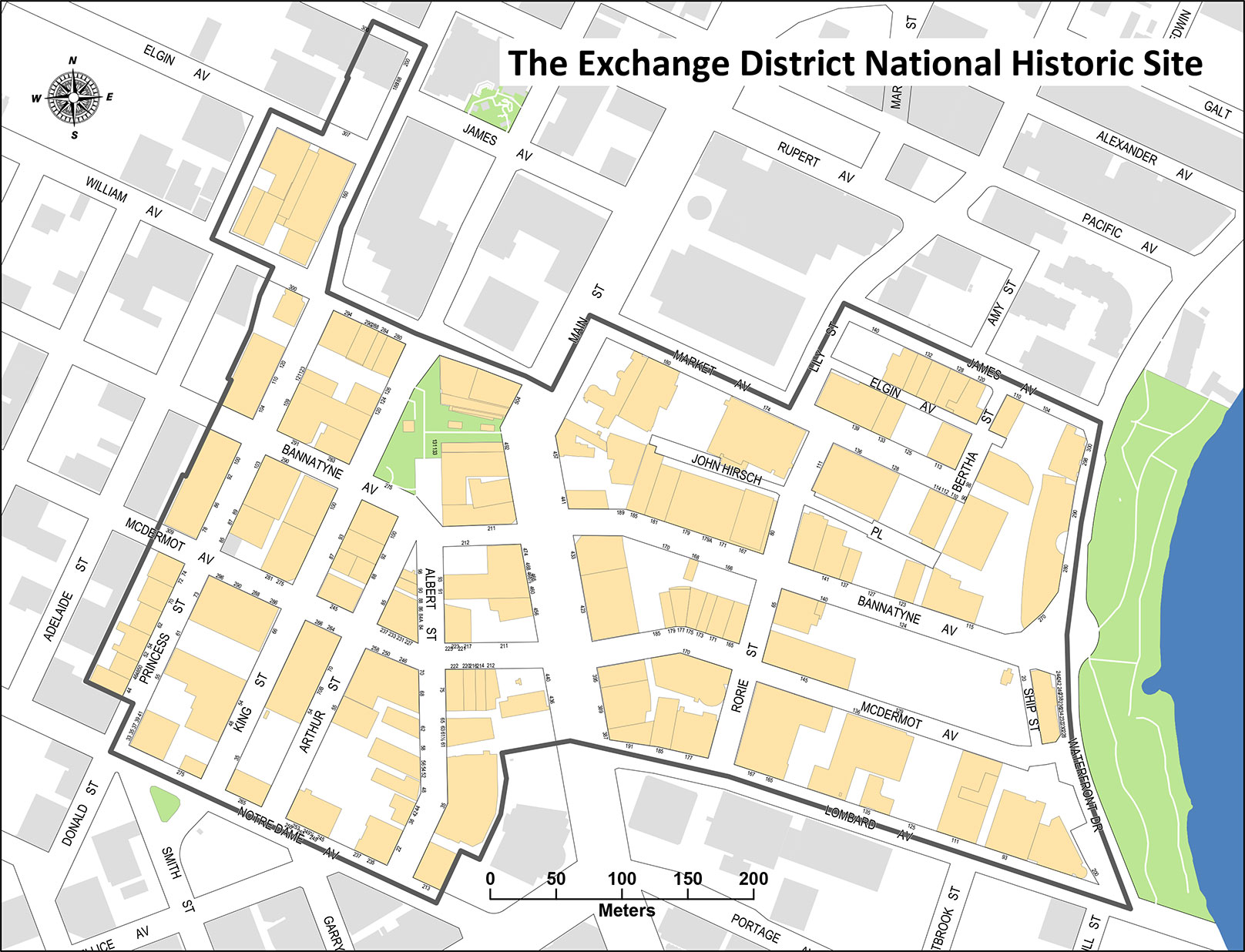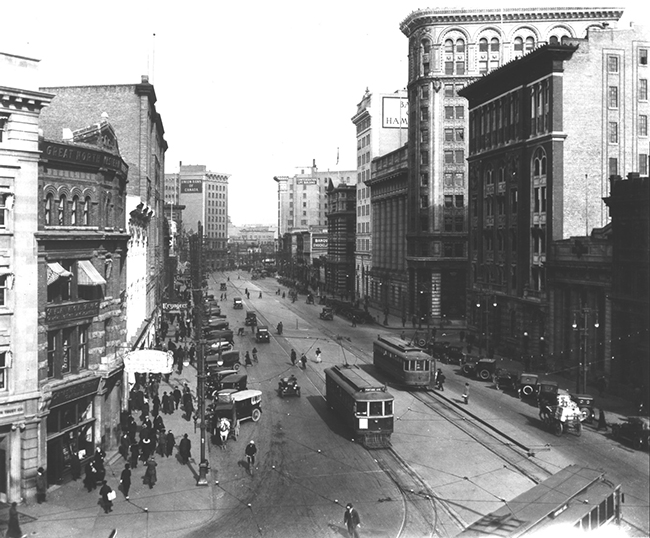The Exchange District National Historic Site covers 20 blocks. This includes more than 100 turn-of-the-century buildings representing a key period for development.
The area features:
- Stone and brick warehouses
- Elegant terra-cotta-clad skyscrapers
- Narrow angled streets
- Covered alleys

History of the Exchange District
The Canadian Pacific Railway & the ride of the agriculture economy
In the late 1800s, the Canadian Pacific Railway (CPR) helped define Winnipeg as the "Gateway to the West". Before heading further west to claim homesteads, thousands of settlers stopped in Winnipeg.
This immigration boom established our city as the centre of the growing Canadian agricultural economy. By the 1920s, more than half of the world’s wheat sales were completed at Winnipeg’s Grain Exchange.
By 1905, Winnipeg was the fastest growing city of its size in North America. It gained the nickname “Chicago of the North” because of its many railway connections and primary role in the economy of the west. The downtown wholesale/warehouse district was called the “Exchange District” after the Winnipeg Grain and Produce Exchange, founded in 1887.

The rise of business & institutions
Several financial institutions established western Canadian headquarters in Winnipeg in the early 1900s. By 1910, a part of Main St. became known as “Bankers Row” courtesy of 20 banks clustered on the street. This created unrivalled architectural showcases of prosperity and cosmopolitan status.
Achievements included:
- Becoming an entertainment and vaudeville showcase full of theatres and cabarets
- Attracting Buster Keaton, Charlie Chaplin, and the Marx Brothers to perform
Today, the Pantages Theatre stands as one of Canada's finest examples of an early 20th century vaudeville venue.
Benefits of the economic boom
In 1911, there were 24 rail lines converging in Winnipeg. Economic spin off included:
- Winnipeg was one of the largest rail centres in the world
- Main and Spur lines serviced more than 200 wholesale businesses and warehouses
- More than half of the world’s wheat sales came from Winnipeg, leading the grain markets in the 1920s
The Exchange District also became the city's publishing core. By the end of World War I, the area boasted three daily newspapers located on McDermot Ave.
Evolution of the Exchange District
The results of World War I and the opening of the Panama Canal slowed the growth of the city. Wheat prices took a sharp drop. The end of the Canadian immigration boom also stalled retail and wholesale activity.
Changes in freight rates after 1920 ended Winnipeg's previous transportation cost advantages. By the mid-1920s, many firms went out of business and the glory years of the Exchange District were over.
Present day
Today, the Exchange District has re-emerged as a vibrant place. It’s a place to work, live and play. It celebrates Winnipeg's architectural heritage. The area also serves as the setting for many film productions.
The names of the grocery and dry goods wholesalers are still visible today. They are either etched or painted on buildings throughout the area.
National Historic Site
September 27, 1997 marked a special day for the city. The Government of Canada declared the Exchange District a National Historic Site. It is one of Canada’s largest designated historic districts.
The boundaries of the National Historic Site were established by the Downtown Winnipeg Zoning By-law No. 100/2004. This bylaw was based on the National Historic Site Commemorative Integrity Statement, 2001 (PDF, 3.1MB).
